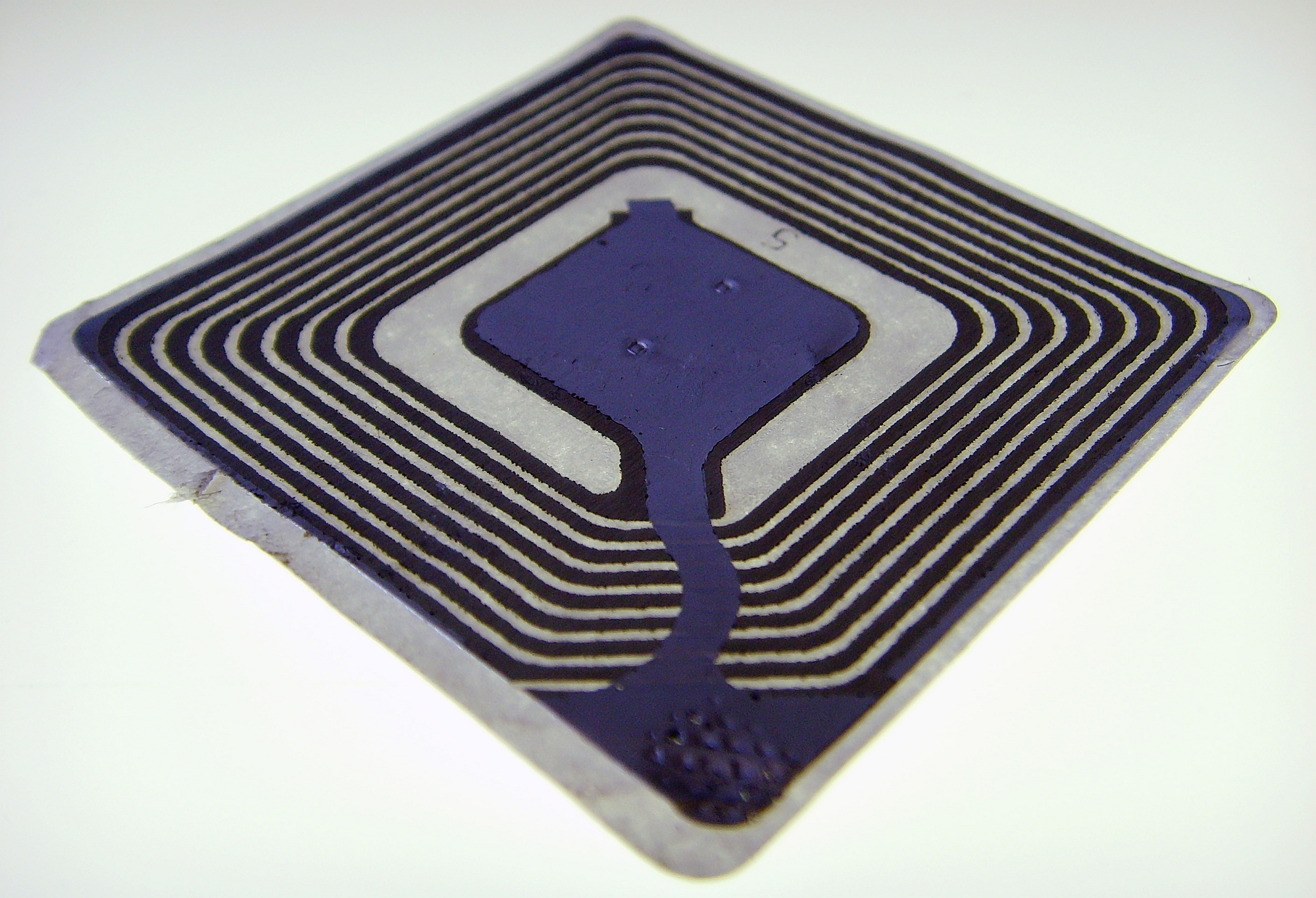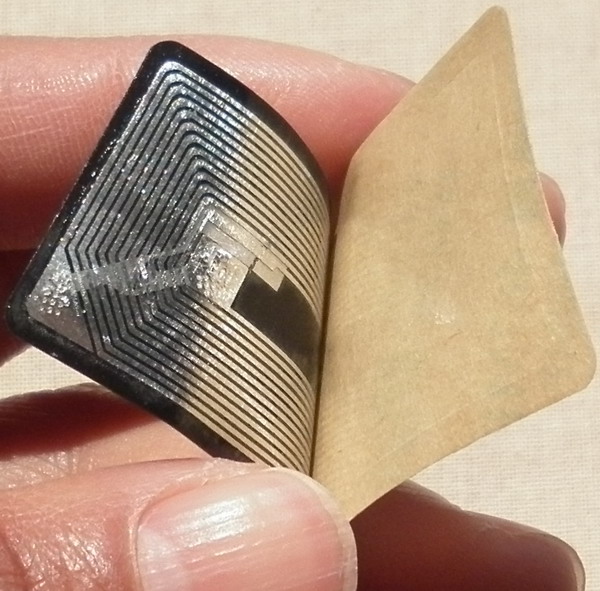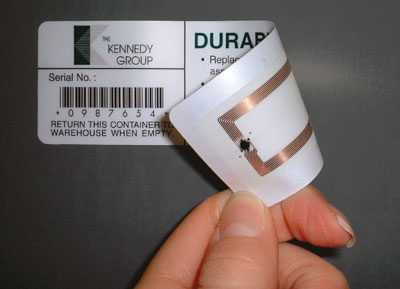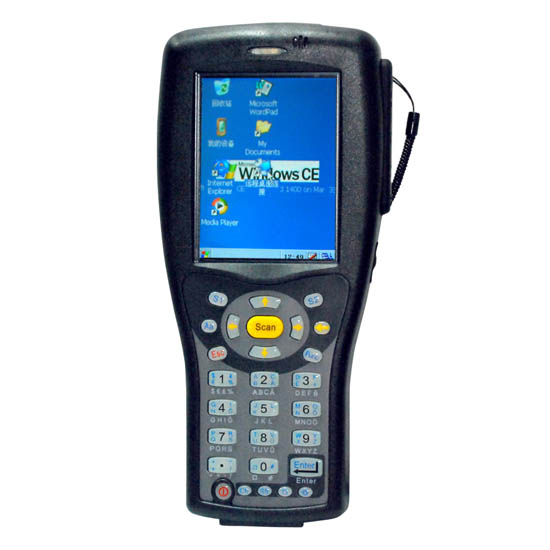It was only a matter of time
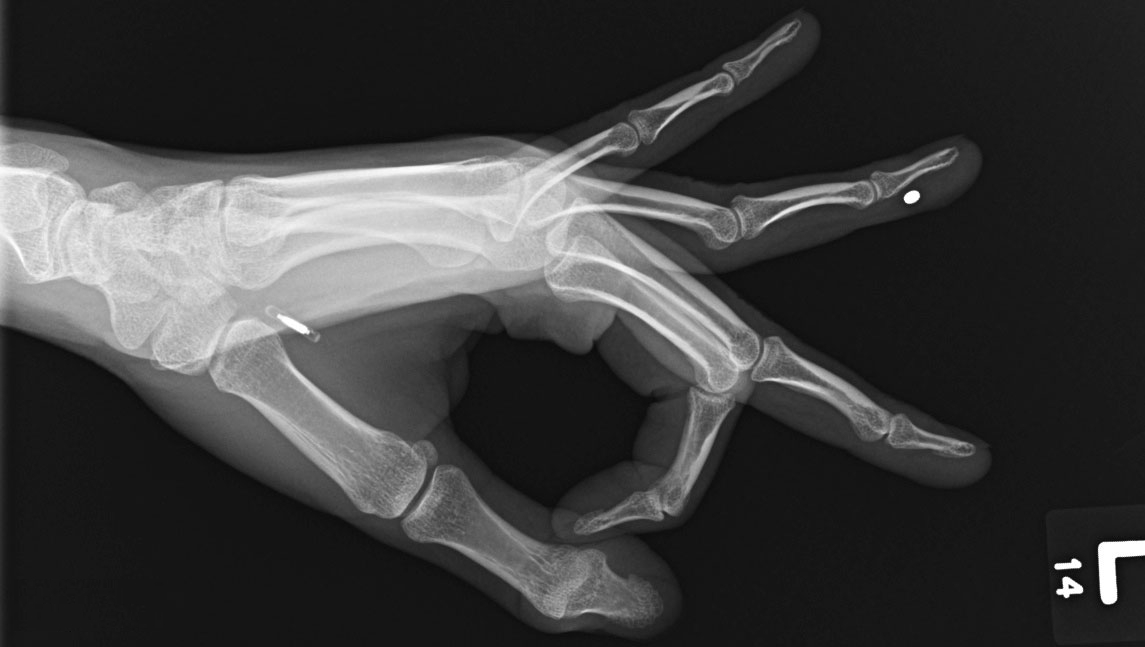
Do you have a pet? Is it chipped? We’ll talk about that technology in a few weeks, but the short version is it uses something called a Radio Frequency Identifier, or RFID. It’s a tiny chip that is inserted between the animal’s shoulders and contains all of its identifying information.
You’ve seen other types of RFID tags before; one of the common places they used to be is inside DVD cases and the tag would be a sticker that looked almost like a small CPU, as in the image below.
They take other forms as well, although the most common type we would see in everyday situations would be a sticker with some kind of metal channel running through it. The following pictures are more examples of what a chip of this type might look like.
These are scanned using an RFID reader, in the case of the chip inserted into your pet it’s a handheld reader that, depending on its level of sophistication, will either show a numeric code that matches up with a record in a database containing the pet’s info (and we’ll talk about *that* technology later as well), or it may have a screen that is larger and contains more information. Here is a picture of one:
Why am I bringing all this up? Although we will talk about the technology itself, we will also talk about the ethics of this kind of technology. No one has a problem getting their pet chipped, but what about people? It’s been tried with prisoners and kids but hasn’t been used too widely because of the moral concerns, but this BBC article shows that at an office in Sweden it is being done voluntarily by some of the employees.
The chip, which is very small and just like the ones in your pet, is injected into the space between the thumb and forefinger and allows for entry into the building as well as operation of the copy machine and some other functionalists. I don’t want to go in to too much detail about it here since we haven’t yet discussed it in class, however I wanted to let everyone know that it was being done, and I suspect it will likely continue to happen more and more into the future, although with some uphill struggles – not about the technology itself but about its use in humans (some of the employees refused).
I also wonder about the concept of ‘bio-hacker’ termed in the article. With the fears that pacemakers could be hacked, bio-hackers are the last thing we need, even if in this case they are ostensibly working for good.
Also, what would happen if the business got a new copy machine or they moved to a new office? Surgery time.

